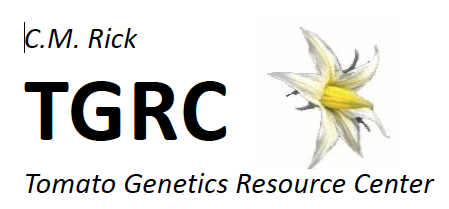Our list of wild species accessions, last updated in 2023, can be downloaded here in *.xlsx format. The current list is a revision of the one published in TGC vol. 63, 2013, and includes 1,203 accessions of 17 wild Solanum species. The list does not include wild accessions maintained as sources of allozyme marker reference alleles (see Miscellaneous Stocks List for those). Accessions no longer available for distribution have been dropped from this list, some accessions may be temporarily unavailable for distribution during seed multiplication.
New items include some accessions that had never been regenerated at Davis, either because other populations from similar locations were already being maintained and resources were limited, or because they were simply overlooked until now. The ‘rescued’ accessions include populations of S. habrochaites, S. pennellii, S. chilense, S. peruvianum and S. pimpinellifolium. The list also includes accessions of S. pimpinellifolium and S. lycopersicum var. cerasiforme donated by the Univ. de Valencia as part of the Varitome Core subset.
In most cases we provide samples of 25 seed per accession for the self-pollinated species, or 50 seeds for the outcrossing species. For the more distantly related Solanum species (S. juglandifolium, S. lycopersicoides, S. ochranthum and S. sitiens), seed availability may be limited. These samples are meant to enable researchers to multiply seed for their future needs.
The following list is sorted by species name, using the classification system of Peralta et al. (2008)[1].
More detailed information on each accession, including the collectors, field notes, geographic coordinates, images, etc, is available under Database Queries/Accession Search.
[1] Peralta, I. E., D. M. Spooner, S. Knapp (2008) Taxonomy of wild tomatoes and their relatives (Solanum sect. Lycopersicoides, sect. Juglandifolia, and sect. Lycopersicon; Solanaceae). Systematic Botany Monographs 84: 1-186.
